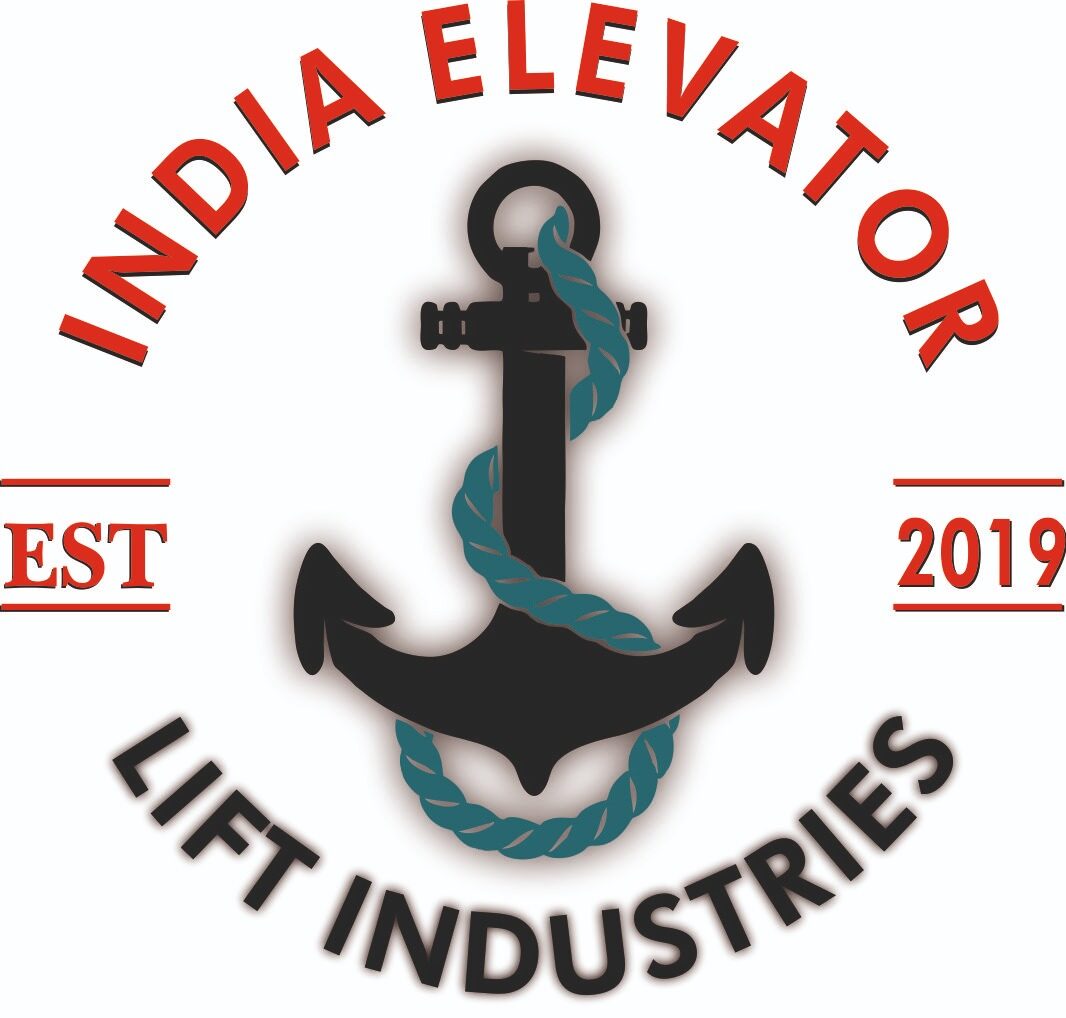Hydraulic Goods Lift Manufacturer
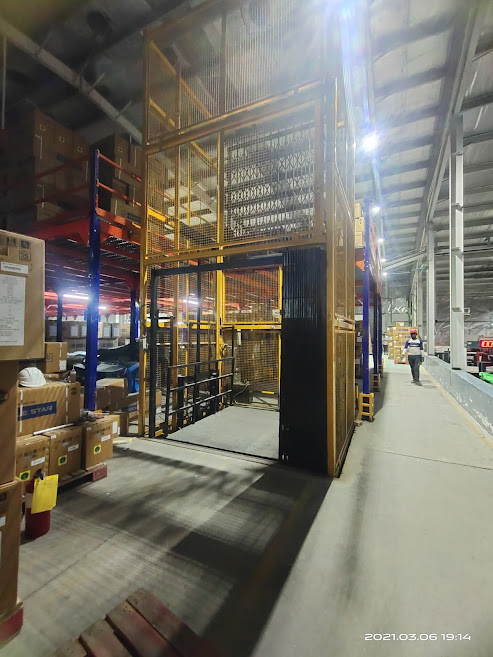
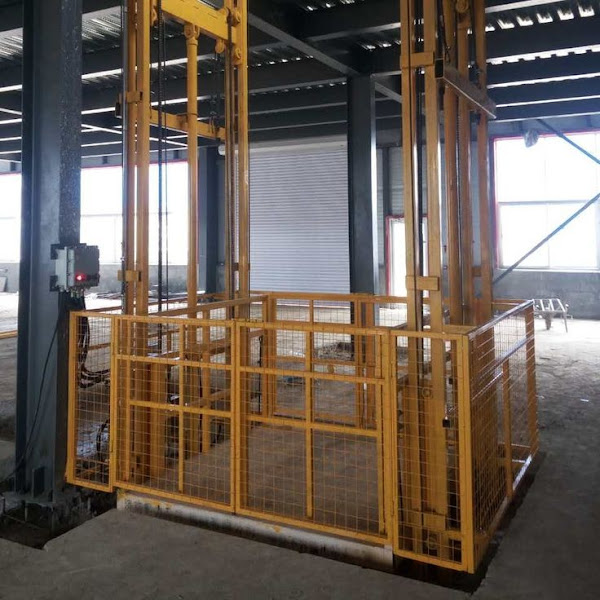
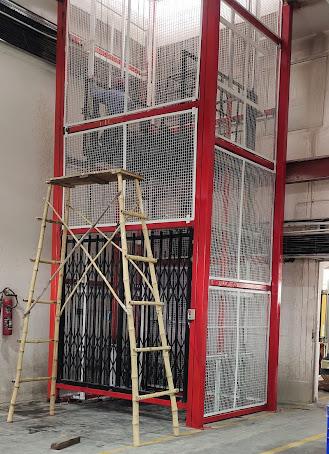
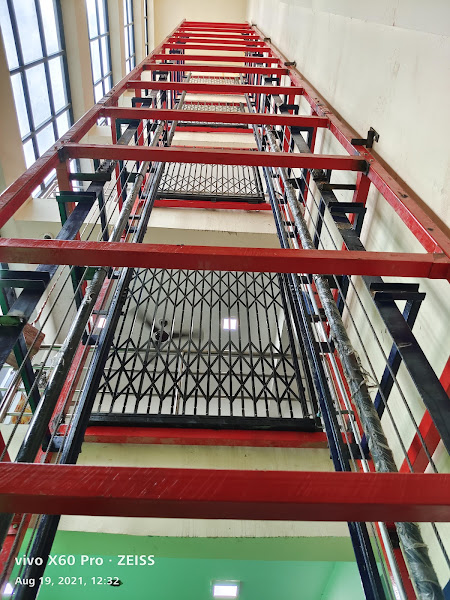
“India Elevator“, a single mast hydraulic goods lift is widely used to transfer material from one floor to another. It is to be installed with wall support on one side and the rest 2 or 3 sides can be used for loading & unloading purposes.
What is hydraulic goods lift?
A hydraulic goods lift is a type of elevator that uses hydraulic cylinders to lift and lower a platform or “car” that is used to transport goods and materials. These lifts are often used in warehouses, factories, and other industrial settings where heavy items need to be moved between different levels. They can be used to move goods within a building, or to load and unload items from vehicles at different heights. Hydraulic goods lifts are typically more powerful and able to lift heavier loads than other types of lifts, and they are also relatively simple and reliable. However, they do require a source of power (usually an electric motor) to operate the hydraulic system, and they may be more expensive to install and maintain than other types of lifts.
| Capacity | 3 Ton |
| Brand | India Elevator Lift Industries |
| Usage/Application | Industrial |
| Maximum Speed | 0.3 m/s |
| Maximum Height | 30 Feet |
| Drive Type | AC |
| Voltage | 220V |
Specifications :-
- Suitable for warehouses, workshops in automotive, container loading, and unloading.
- Convenient installations and maintenance, appearance, safe and convenient operation.
- Travel up to 10 meters.
- Railing on the platform provides safety against loose materials falling during operation.
- Suitable for warehouses, and work shops in automotive, container loading, and unloading.
- Convenient installations and maintenance, appearance, safe and convenient operation.
FREQUENTLY ASKED QUESTION
Hydraulic lifts can be a good option for home use, depending on your specific needs and circumstances. A hydraulic lift is a type of elevator that uses hydraulic pistons and fluid pressure to lift and lower a platform or cab. Here are some potential advantages and considerations to keep in mind when considering a hydraulic lift for home use:
Advantages:
- Hydraulic lifts are generally quiet and smooth in operation, making them a good choice for home use.
- They are typically more energy-efficient and require less maintenance than other types of elevators.
- Hydraulic lifts can be customized to fit a wide range of space requirements and design preferences, making them a good fit for many homes.
Considerations:
- Hydraulic lifts can be more expensive to install than other types of elevators.
- They typically require a separate machine room or pit, which can take up additional space in the home.
- Hydraulic lifts can be slower than other types of elevators, which may be a consideration if speed is a concern.
- In some cases, hydraulic fluid leaks or other maintenance issues can be a concern.
Overall, if you have specific accessibility needs in your home or are interested in adding an elevator for convenience or design reasons, a hydraulic lift can be a good option to consider. It’s a good idea to consult with a licensed elevator contractor to discuss the specific requirements and costs associated with installing a hydraulic lift in your home.
There are many types of lifts, but here are three of the most common types:
Hydraulic lifts: These lifts use hydraulic cylinders and fluid pressure to lift and lower a platform or cab. They are commonly used for low to mid-rise buildings, and are often installed in homes, offices, and other smaller buildings.
Traction lifts: These lifts use steel ropes or belts to lift and lower the cab. They are commonly used in high-rise buildings and are designed to be faster and more efficient than hydraulic lifts.
Pneumatic lifts: These lifts use air pressure to move the cab. They are similar to hydraulic lifts in that they are often used for low to mid-rise buildings, but they are often quieter and more energy-efficient.
Other types of lifts include scissor lifts, boom lifts, and aerial lifts, which are commonly used in construction, maintenance, and industrial settings.C
The formula for a hydraulic lift is:
F1/A1 = F2/A2
Where:
- F1 is the force applied to the input piston
- A1 is the surface area of the input piston
- F2 is the force exerted by the output piston
- A2 is the surface area of the output piston
This formula is based on Pascal’s principle, which states that pressure applied to a fluid in a closed system is transmitted equally in all directions.
In a hydraulic lift, the force applied to the input piston is transmitted to the fluid, which then exerts an equal force on the output piston. By using pistons of different sizes, the force can be amplified or reduced as needed, allowing for heavy objects to be lifted with relatively low input force.
It’s worth noting that while this formula is a useful tool for understanding the principles behind hydraulic lifts, there are many other factors that can affect the performance and efficiency of a hydraulic lift in real-world applications.
There are several types of hydraulic lifts, but here are some of the most common ones:
Conventional hydraulic lifts: These are the most common type of hydraulic lift and are used for a variety of applications. They consist of a hydraulic cylinder, a pump, and a control valve to lift and lower the platform or cab.
Telescopic hydraulic lifts: These lifts have multiple stages and are used for higher lifting heights. They can be more stable than other types of lifts and are often used for industrial and construction applications.
Cantilevered hydraulic lifts: These lifts have a single column and are used for narrow spaces or where there is limited overhead clearance. They are often used in parking garages, car dealerships, and other similar applications.
In-ground hydraulic lifts: These lifts are installed into the ground and have a platform that rises to the desired height. They are often used for automotive repair and maintenance applications.
Mobile hydraulic lifts: These lifts are designed to be portable and can be moved to different locations as needed. They are often used in automotive and industrial applications.
Overall, the specific type of hydraulic lift that is best for a particular application will depend on factors such as lifting height, weight capacity, space requirements, and other considerations.
